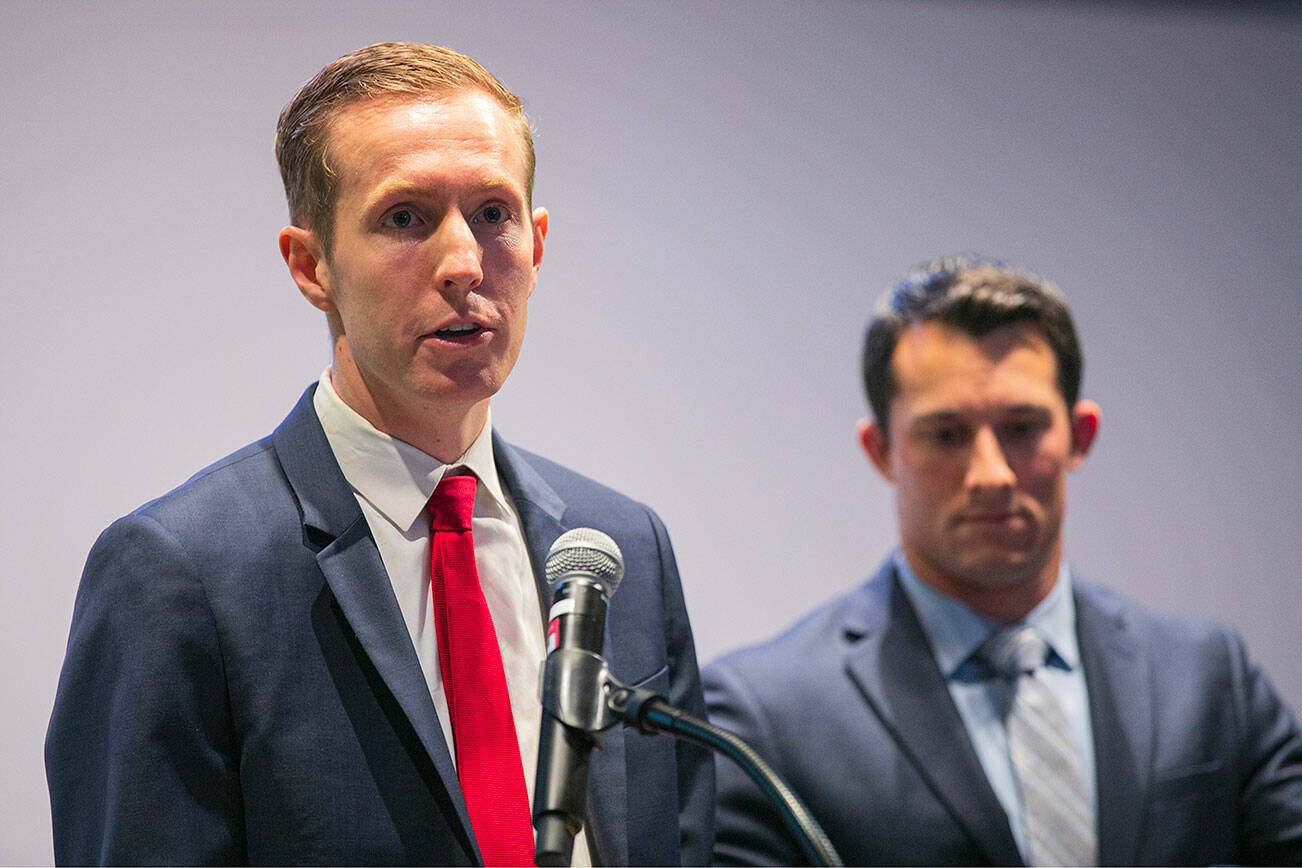EVERETT — Snohomish County Council hosted a panel of developers and environmental experts on Wednesday to discuss concerns about the undecided Critical Areas Regulations ordinance update.
The ordinance update is part of the county’s 2024 comprehensive plan and covers development and land management regulations around wetlands, fish and wildlife conservation areas, geologically hazardous areas, aquifer recharge areas and some flood hazard areas.
Last year, the Washington State Department of Ecology worked with Snohomish County’s Planning and Development Services to help update the ordinance and sent their recommendation to the county council, based on feedback from state agencies, local tribes and stakeholders.
Council members Jared Mead and Nate Nehring introduced amendments to the ordinance, decreasing environmental protections to create flexibility for possible development.
The proposed changes are based on the county’s 2006 Best Available Science report, a compilation of data and information local governments can rely on to create and implement policy.
The amendments would allow a 15% reduction in buffers around critical areas when a fence is built around a habitat and reduce the standard buffer requirement for streams, lakes, marine waters and wetlands over 4,000 square feet by 50% or 25 feet, meaning development could encroach further into fragile environments.
The amendments would also allow wetlands under 4,000 square feet to be filled in some situations.
The county council was set to decide what version of the ordinance update they would adopt on Jan. 15. At the time, council member Megan Dunn said it was unlikely a decision about whether or not to adopt the amendments would be pushed to a later date because the county was supposed to adopt updates in December.
But after an article published by the Daily Herald four days before the hearing detailed the amendments and their possible effects, hundreds of people emailed council members with concerns. At the Jan. 15 hearing with over a hundred people watching online and a full room, more than 20 people gave public comments, many stating they became aware of the situation through the Herald’s coverage.
The county council then delayed the decision, saying they needed more time to consider available science and information on how the ordinance could affect the county.
On Tuesday, the council hosted a panel, including representatives from Pacific Ridge Homes, Washington Fish and Wildlife Department, Tulalip Tribes, Master Builders Association of King and Snohomish County and others.
Some panelists who are against the amended ordinance said decreasing buffers on critical habitats posed irreversible damage to those environments.
“Despite significant investments in the recovery of salmon and other fish and wildlife species, scientific evidence indicates that policies are not working or are not going far enough to protect our state’s rich natural heritage,” Todd Gray, an environmental protection ecologist for Tulalip Tribes said. “The answer in my mind is, until we figure this out and agree on what the buffers should be, let’s stay out of the area. Don’t fill it with houses and then later realize that we shouldn’t have.”
Panelists who support the amendment believe adopting the new version would deeply impact housing development in Snohomish County, which is expected to grow by 300,000 people by 2044, according to the recent comprehensive plan.
“Right now, too many people are finding that the home they need simply isn’t available or within reach,” said Brian Hayter, vice president of government affairs for the Snohomish County Association of Realtors. “We need to make sure we’re all looking at reasonable ways to provide housing for the people who live and work here.”
Developers also brought up that if the new ordinance was adopted, they would lose land to create more housing, which would also increase the price of available units. Others raised concerns about their children being able to afford houses near where they were raised.
Tim Trohimovich, director of planning and law at Future Wise, said it’s possible to find a balance.
“We can have some. We can have orcas. We can have houses, but only if we’re smart,” he said, pointing to housing solutions such as middle housing provisions and regulatory flexibility on development.
Council members have not announced a date for the next public hearing sessions and when they will decide on the ordinance. People interested in receiving updates may reach out to contact.council@snoco.org, where they may also submit public comment.
Eliza Aronson: 425-339-3434; eliza.aronson@heraldnet.com; X: @ElizaAronson.
Eliza’s stories are supported by the Herald’s Environmental and Climate Reporting Fund.
Talk to us
> Give us your news tips.
> Send us a letter to the editor.
> More Herald contact information.

























